An itinerary on the tracks of the legendary 18th-century lothario, Casanova, as told by Sara Scarpa…
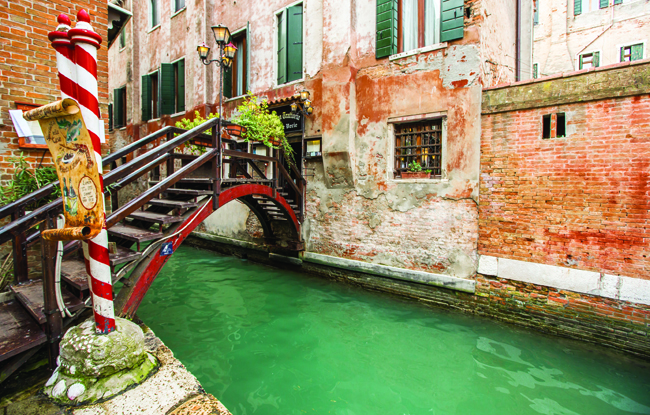
To many, Casanova is simply the reckless Venetian lover who once upon a time escaped from a prison cell. Portrayed as such over the years in film and
television productions, this tarnished account of him is etched into the consciousness of anyone who attempts to connect the man to the legend. Unfortunately, he is not remembered for his translation of the Homer’s Iliad nor for being a philosopher. Scratch below this tainted surface and therein begins the true and extraordinary life of one of the most vibrant characters of 18th century Europe.
Giovanni Giacomo Casanova was born in Venice in 1725, a writer, clergyman, lawyer, military officer, free mason violinist, conman, spy, politician, cabalist, and traveller who along the way seduced many women (more than 120 conquests by his own reckoning!) and after many centuries still charms us today through his detailed autobiography: Histoire de ma vie (The Story of My Life). Casanova’s exploits took place throughout Europe; London, Paris, Corfu and Constantinople, from debates with Voltaire to an audience with Catherine the Great of Prussia. 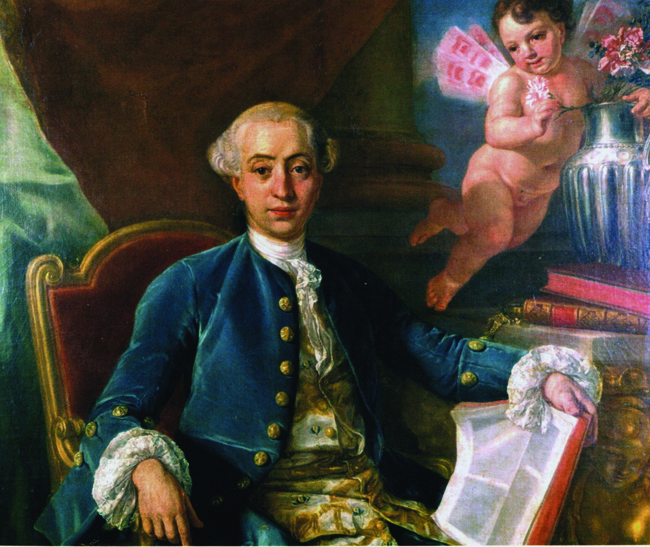
However, Venice, his birthplace and the home of his heart, is where I want to take you. In spite of the fact that he spent little of his life in the city, Casanova is unthinkable without Venice.
A Venetian myself, I have always been fascinated by the captivating tales of his experiences in my hometown, which has changed little since the views which inspired Canaletto. The city offers the perfect backdrop to paint the libertine’s actions. Without being an historian, Casanova paints a great portrait of the cultural and political Venetian scene in the 18th century – a time of decadence, the eve of the end of the grandeur of the Serenissima and of the decline of its maritime power in the Mediterranean. In that moment of decay there was no better reaction than transgression, frivolity and licentiousness. The Carnevale was the best expression of this freedom – for many months and in many occasions throughout the year, Venetians used to hide their identity, gender and social class behind masks and they could act completely freely.
This was the perfect background for Casanova’s intrigues and adventures. “I will begin with this confession: whatever I have done in the course of my life, whether it be good or evil, has been done freely; I am a free agent,” (Giacomo Casanova). Casanova was such a complex individual that there could probably be so many versions of him and so many stories about him. They would, of course, only partially represent him and none would do him justice.
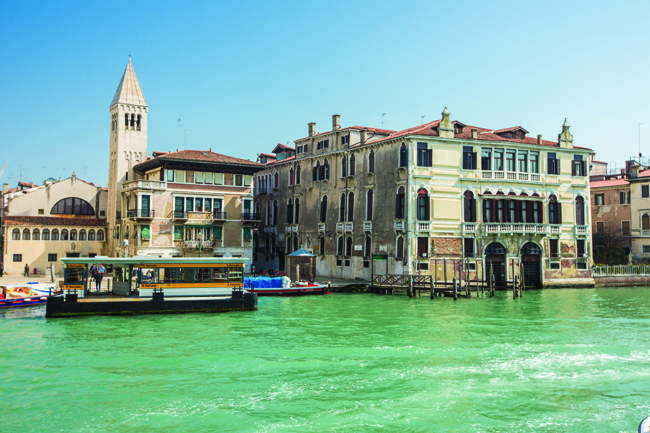
While outlining his story I am not too concerned about distinguishing what is true and what are simply tales, as his fame lives on thanks to both elements just like the story of Venice itself does thanks to its history and legends. After centuries, the Venetian Seducer’s legend still lives on and as per Casanova’s wish that he be loved even after death…
Casanova’s early live and first loves
We start our journey in the district of San Marco, the sestiere where Giacomo was born and spent the first years of his life. Alight at San Samuele, which is located on Canale Grande and can be reached with the no. 2 vaporetto, you will arrive in the small Campo San Samuele. To the left of this square is Palazzo Grassi, the imposing classical building which houses great temporary art exhibitions. On the opposite side of the Canale you will find Ca’Rezzonico, a wonderful museum exhibiting artefacts from the exact time of Casanova’s prime, and not to be missed.
From within the Campo you will be faced with the campanile and the façade of the church of San Samuele. This church was the setting for his parents’ wedding and also where little Giacomo was baptised. During a short-lived career in the priesthood it is from this pulpit that Casanova gave his first one and a half sermons. The first one was successful and the charm of young Giacomo was already having an effect on the women attending the Mass – he
collected money and received many love letters. Unfortunately, his second sermon was not a success… Following a wine-fuelled lunch to calm his nerves, he delivered a drunk and rambling sermon and afterwards, on realising the predicament he had put himself in, pretended to faint in order to bring the situation to an end… 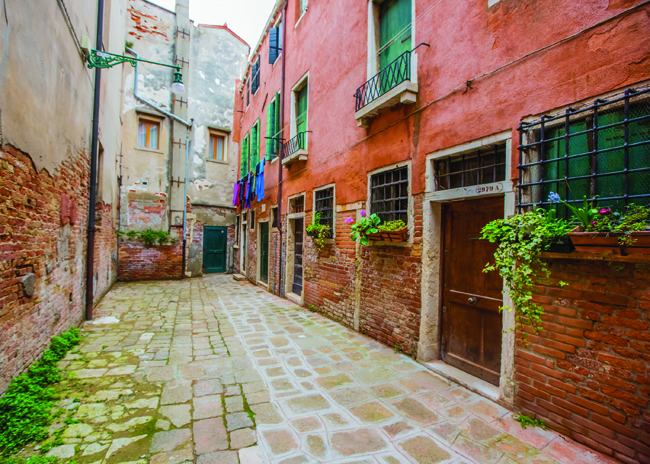
A plaque marks the calle of his birthplace, a few metres away in Calle Malipiero, a typically narrow Venetian street once called Calle della Commedia. It was here in a house on the third floor that Casanova was born, literally onto the world stage, surrounded by a family of actors in a city famous for its theatres. His mother, Zanetta Farussi, was an actress and she was often travelling so Giacomo spent his childhood with his grandmother Marcia in a house in the nearby Corte dele Muneghe.
As a boy he was quite sickly and suffered from frequent nosebleeds. Due to the fact that at the age of eight, surprisingly, he still could not read nor write, and also because of his foolish expression, he was considered stupid. To start his education he was taken on a gondola to Padua, where he studied law and learned to play the violin. After being refused by one of his first loves – the chaste Angela Tosello, Father Tosello’s niece, who lived in a house just behind the theatre San Samuele in Calle Nani he was soon consoled by Angela’s relatives and friends, the Savorgnan sisters. In a house in Salidas San Samuele, in a vast bed on the fourth floor, all three of them lost their virginity. Later on, he enjoyed the protection of his neighbour, the 76-year-old senator Alvise Gasparo Malipiero, and he was often guest at his palace (palazzo Malipiero).
From his garden he used to spend time gazing at his neighbour, the 17-year-old actress and singer Teresa Imer. She was often at the window “attracting the attention of the old man, even if she simply made him long for her and nothing more”. Giacomo and the old senator were both besotted with her and when one day the Senator walked in on them during an uncompromising situation Casanova had to flee from a ground floor window to escape the beating the senator would give him. The lovers’ paths was intertwined throughout their eventful lives and in 1758, while in Holland, Casanova was introduced to their child Sophia, who was already four at the time. Teresa Imer’s palace looked over Corte del Duca Sforza (she lived at number 3065).
A ten-minute walk from here in the direction of Campo Santo Stefano, you will find Campo San Maurizio. Here, at Palazzo Bellavite 8 his friend, the famous erotic poet Giorgio Baffo, introduced him to more of life’s pleasures. If you will go back to Santo Stefano Square, you will pass the big monument with the statue of the Italian linguist and patriot Niccolò Tommaseo sitting on a pile of books (to whom locals refer as the “bookshitter”!) and turning right you will be in Campo Sant’Angelo. Here, almost in the middle of the square, there was a great marble table that was a sort of monument (which used to be the Tavola di Arruolamento, where money was laid out to encourage Venetians to join the army). One night, while they were out playing all sorts of pranks, Casanova and his friends overturned the table…
Casanova’s Hangouts
If you leave Campo Sant’Angelo and walk towards Campo Manin, you will pass through Campo San Luca and Campo San Bortolomio, popular spots where locals tend to meet up. From this last square we can quickly reach Rialto bridge. We cross the bridge just in time for lunch to refuel ourself at one of Casanova’s favorite osterie – Le Poste Vecie and Cantina Do Spade 11 . Cantina Do Spade is a typical Venetian setting for an ombra and some cicchetti where you will also find an extract on the wall regarding Casanova in this very spot. 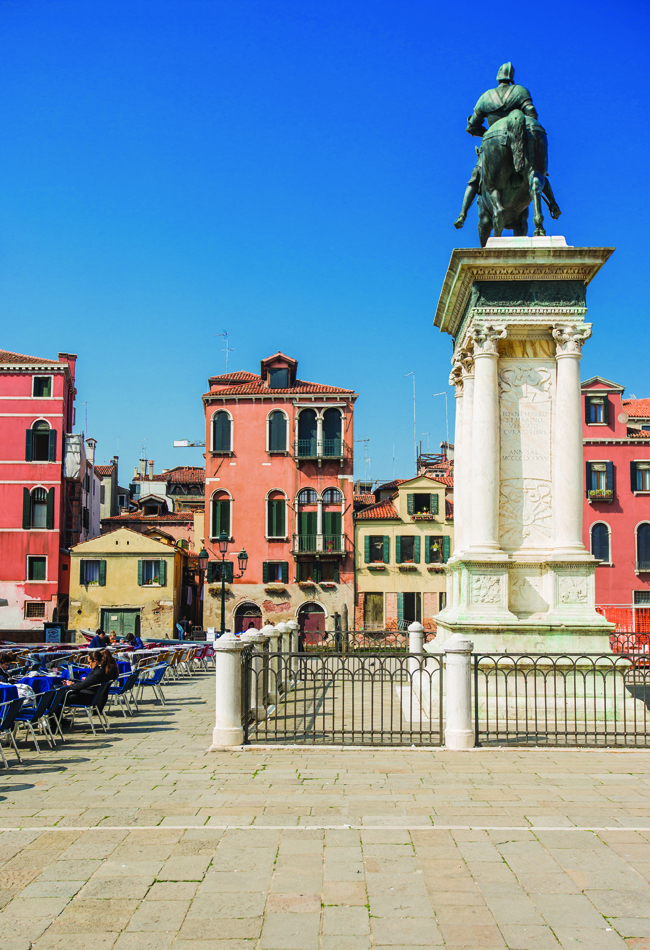
You will learn how in 1746 Casanova, then 21, was having fun with other seven friends during Carnival time. While they were out they noticed a beautiful woman with her husband and other two men. They pretended to be from the Council of Ten, a sort of State Inquisition; they arrested the men and brought them to the island of San Giorgio Maggiore, where they left them. In the meanwhile two of them stayed with the woman waiting for the other friends to come back. Once back they brought the distraught woman to Alle Spade and ate and drank with her.
They then took her to a room of the upstairs inn. Here they all slept with her with the exception of Casanova’s brother. According to Casanova’s memoirs she left thanking them… We will never know the truth…
Another of his favourites was Caffè Florian in Saint Mark’s square. Born in 1720 this caffè is probably the oldest in the world and has been visited by many artistic notables over the centuries. Due to the fact that it was also the only caffè to serve women during the 18th century it must have been Casanova’s favourite… Here, surrounded by local history, we can enjoy the heavenly cioccolata which takes its name from the famous lover. On the opposite side of St Mark’s square is Caffè Quadri where Casanova spent a short employment as a violinist entertaining the crowds.
Lust in Murano’s Cloisters
Among his many lovers and stories the most infamous is his relationship with not one but two nuns from the convent of Santa Maria degli Angeli in Murano. First he had an affair with Caterina Capretta. She was his lover before becoming a nun. Casanova used to walk with her in the gardens on the Giudecca’s island and he made love to her here calling her his “wife”. After her father sent her to the convent, Giacomo had to smuggle love letters to her to the convent via a courier in the confessionals of the Church of San Canzian. (There are pillars around San Canzian and confessionals on the right as you enter the church. Here Giacomo could exchange notes and provide food and clothing for pregnant Caterina).
It was during his visits to the convent that he met the second nun, referred to in his memoirs as M.M. to protect her identity but who we now know to have been Marina Morosini, Caterina’s older friend. She was the French Ambassador’s lover and came from a very noble family, hence the protection of her identity. His first private meeting with Marina took place in Campo San Giovanni e Paolo, the bigsquare flanked by the great church that is a sort of doges’ mausoleum and the monumental entrance of what was once the great Scuola di San Marco and nowadays is the grand entrance of the main hospital in Venice.
Behind the equestrian statue of the famous mercenary Bartolomeo Colleoni in the middle of the square was the lovers’ meeting point. As we learn from Casanova’s story, on one cold night a two-oared gondola reached the shore and a man in a mask disembarked. Thinking it to be a trap, Casanova was about to flee before Marina removed the mask. From there they walked arm in arm in the direction of Piazza San Marco towards San Moisè, where
Casanova had rented a magnificent casino for this special occasion. This encounter along with many others is described in great detail by Casanova’s own hand in his book.
Not long after their affair blossomed there was a new twist… M.M.’s protector, de Bernis, the French Ambassador, was happy for the affair to continue if he could watch them making love through a peephole casino. His dream was obviously fulfilled….
Casanova’s Houses
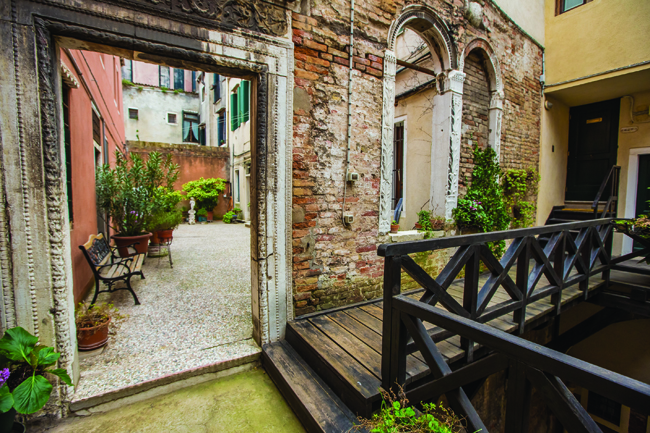
Casanova never owned a house in Venice. However, having many lovers and many friends he lived in many different houses. He lived for the first years of his life in the already mentioned Calle Malipiero and Corte delle Muneghe. Then, in his 20s, he lived for a while and came back numerous times to Palazzo Bragadin (Castello 6041). Now a pretty hotel (Ca’ Bragadin Carabba www.cabragadin.com), it used to be the palace where Casanova stayed as Bragadin’s guest after saving the senator’s life… 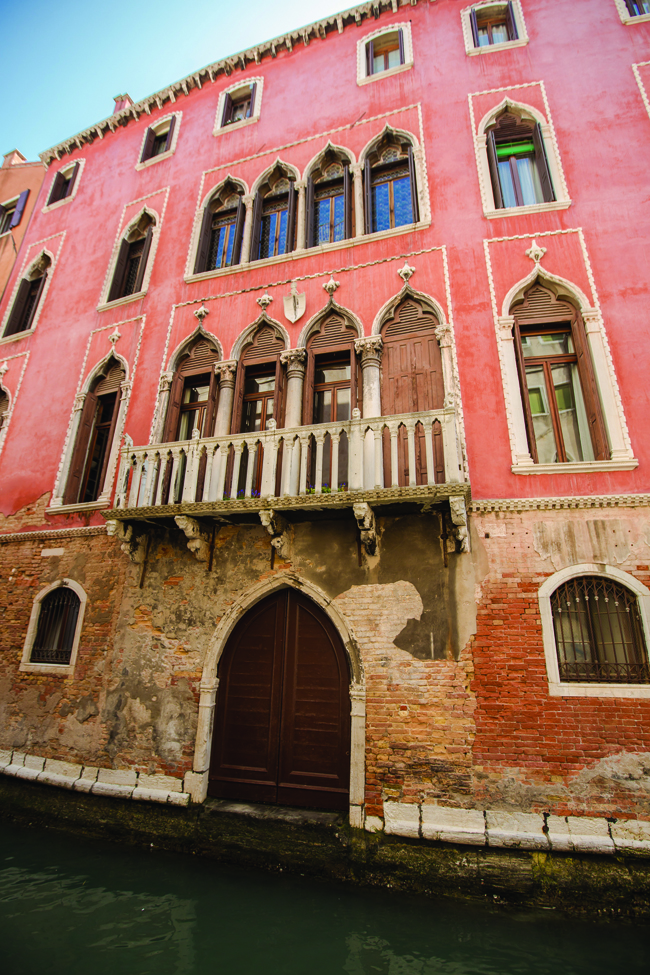
In 1746, just one year after he had played his trick with his friends on the unfortunate couple, Casanova was playing the violin for three consecutive days at a wedding party at Palazzo Soranzo in Campo San Polo. On the last day of the celebrations, when he left his orchestra to return home, he picked up a letter dropped by one of the guests, Senator Matteo Giovanni Bragadin. The gentleman insisted on taking him home to thank him. Three minutes later on the gondola the senator suffered what appeared to be a stroke. Casanova acted quickly. He got off at Calle Bernardo to get a surgeon who bled the senator on the gondola.
Once arrived at the senator’s Palazzo Bragadin di Santa Marina a doctor was summoned. He sought to cure the senator by applying a mercury poultice to his chest which was in fact killing him. Casanova audaciously removed the poultice without consulting with the doctor. Bragadin recovered, hailed him as his saviour and asked him to move to his palazzo. He then regularly consulted him as a special cabalist and adopted him as his son, providing him with accommodation, food, private servant, gondola and ten sequins a month. The young Casanova made in this way his entrance into society, changing his status from “the lowly state of violinist to that of gentleman” (VIII).
Later in his life he lived for three years in Barbaria de le Tole in a house on the top floor with his lover Francesca Buschini. They lived together with Francesca’s mother and brother and Casanova looked after all three of them before having to leave Venice once again. Finally, in 1755, the year he was arrested, he lived in Calle della Gorna (today part of the public hospital).
Casanova the Gambler
For all the freedom 18th century Venice provided there was an underlying unconscious structure in the typical Venetian day which is best described by the old saying “messa, bisca e amante” (Mass, gambling house and lover). Gambling was one of the favourite activities for the 18th century Venetians, and a priority for Casanova. He made a fortune establishing a state lottery and he gambled throughout his adult life, winning and losing huge sums.
If we take a stroll not far from Saint Mark’s square along Calle Larga XII Marzo (only a few minutes from the mentioned Palazzo Bellavite) we will find a busy calle with many luxury stores. Prada, Gucci, Hermès… This is the luxury shopping lovers’ favourite spot! At the end of the calle stands the super elaborate Baroque façade of the church of San Moisè. If we walk past it and take the second calle on the right we will find the Hotel Monaco and Grand Canal, just opposite the famous Harris Bar.
Here, in what today is part of the magnificent hotel, Casanova used to come and gamble – it was the famous Ridotto di S. Moisè. A remarkable restoration work has brought back to life the stunning beauty of the 18th-century rooms. The Camera Longa is the main room; it has a gallery with a balustrade and slender columns where the guests could chat while enjoying the food. Along the side walls of the room there were tables arranged for gambling and the walls used to be covered with gilded leathers. Nearby is the Stanza dei Sospiri (Room of Sighs) which probably takes its name from the
sighs of the unlucky gamblers…
Imprisonment and Escapades
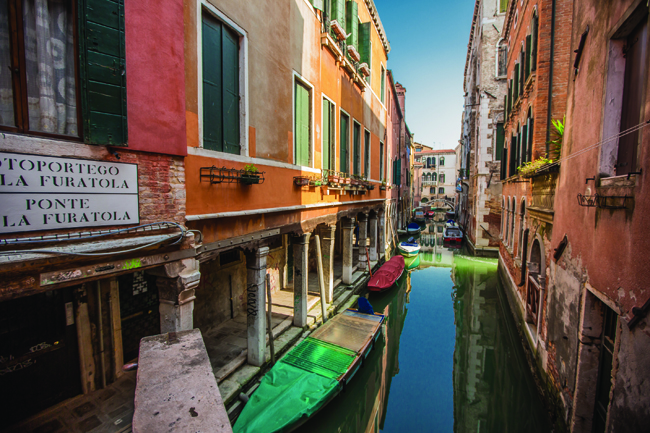
Casanova was arrested twice. The first time in 1743 after his failed attempt to pursue his ecclesiastical career in the Seminario of San Cipriano in Murano. Because of his irreverent behaviour he was imprisoned for four months in the island of Sant’Andrea just in front the church of San Nicolò on the Lido.
The second time he was arrested on 26 July 1755. Nearly 40 men arrived to the house he was staying at near San Giovanni e Paolo in Calle Luigi Torrelli to arrest him primarily for “public outrages against the holy religion”. He was imprisoned in the Piombi, the terrible prisons under the roof of the Doge’s Palace where he was condemned to stay for five years. I Piombi, the “Leads”, were special prisons so named because they were located directly under the palace lead roof. Here it was freezing in the winter and extremely hot in the summer.
With two chapters dedicated to his escape in his Histoire de Ma Vie and a whole book, (The Story of My Escape from the Prisons of the Republic of Venice called “The Leads”), one senses Casanova took great joy in reliving the episode and may have ensured an embellishment or two for theatrical suspense. That said, his detailed escape across the roof and through a window does seem to stand up with administrative records of repairs to the route in the same year.
A combined escape with Father Balbi, who was in an adjacent cell, saw them work their way onto the roof of the Doge’s Palace, through a window which led them into a locked room, before attracting the attention of a guard they managed to convince they had been locked in the room overnight following a party, before finally walking calmly down the golden staircase and then the Giants’ Staircase of the Doge’s Palace and then escaping from the city on a gondola.
The Secret Itinerary Tour in the Doge’s Palace will allow you to view both Casanova’s cells.
